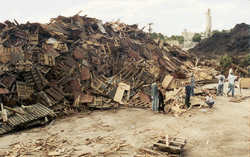Hi everyone,
I have enjoyed reading the post here, great information and good time killer as well!
I just brought home my new wood stove tonight, a Lopi Leyden. I bought the stove because of the published (website etc.) ratings of 73,100 -a incredible burn time and top loading convenience.
When I got the stove home I opened the crate and read the EPA card attached to the door, the card says Heat Out put 10,700 to 34,000 btu/hr.
I hadn't seen this card at the store and raised my concern. after looking through some other literature in the stove I found a brochure for all Lopi stoves in this they state that the Btu's are 64,300.
I am planning on calling the store in the morning but if anyone can help me understand where and how these numbers come from I would really appreciate it!
I have enjoyed reading the post here, great information and good time killer as well!
I just brought home my new wood stove tonight, a Lopi Leyden. I bought the stove because of the published (website etc.) ratings of 73,100 -a incredible burn time and top loading convenience.
When I got the stove home I opened the crate and read the EPA card attached to the door, the card says Heat Out put 10,700 to 34,000 btu/hr.
I hadn't seen this card at the store and raised my concern. after looking through some other literature in the stove I found a brochure for all Lopi stoves in this they state that the Btu's are 64,300.
I am planning on calling the store in the morning but if anyone can help me understand where and how these numbers come from I would really appreciate it!


